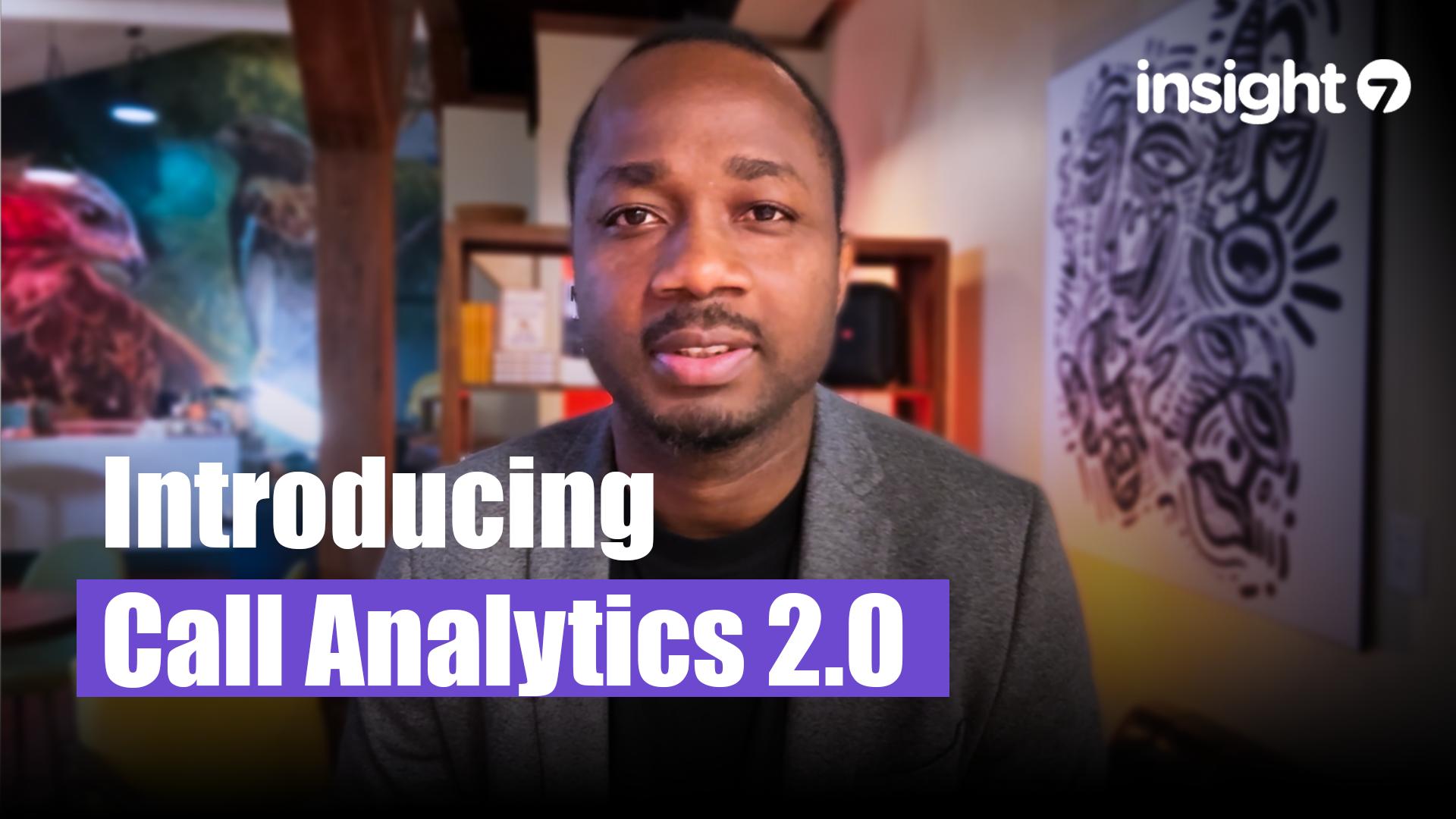Choosing the Right Call Analytics Platform for Your Organization
-
Bella Williams
- 10 min read
This guide provides an in-depth look at selecting the most suitable call analytics platform tailored to your organization’s needs. Key benefits include improved customer insights, enhanced operational efficiency, and data-driven decision-making. The guide covers critical evaluation criteria, implementation strategies, and best practices for maximizing platform effectiveness.
The Role of Call Analytics in Modern Business Operations
Call analytics has become essential for organizations seeking to enhance customer engagement and streamline communication processes. It enables businesses to analyze call data, understand customer behavior, and optimize sales strategies. The fundamental mechanism involves collecting and analyzing call data, which transforms raw information into actionable insights.
This approach shifts traditional processes from reactive customer service to proactive engagement strategies, automating insights that drive team alignment and efficiency. Effective implementation of call analytics requires robust data integration and a culture of data-driven decision-making across departments.
Understanding Call Analytics: Core Concepts
Call analytics refers to the systematic collection, measurement, and analysis of call data to improve business outcomes. It encompasses various metrics such as call volume, duration, and customer sentiment. Unlike traditional methods that focus on historical data, call analytics emphasizes real-time insights and predictive analytics for forward-looking strategies.
Core Capabilities: Call analytics enables organizations to:
- Enhance Customer Experience: Identify pain points and improve service delivery.
- Optimize Sales Processes: Evaluate call performance and refine sales tactics.
- Drive Marketing Strategies: Analyze customer interactions to inform targeted campaigns.
- Improve Operational Efficiency: Streamline workflows and reduce call handling times.
- Facilitate Compliance: Ensure adherence to regulations through call monitoring.
Strategic Value: This enables proactive decision-making, leading to better alignment across sales, marketing, and customer service teams.
Why Are Organizations Investing in Call Analytics?
Organizations are migrating from outdated call monitoring systems to advanced analytics platforms to enhance customer interactions and operational efficiency.
Key Drivers:
- Data-Driven Insights: The need for actionable insights from customer interactions that traditional methods cannot provide.
- Competitive Advantage: Real-time analytics offer a timing/speed advantage that enhances business impact.
- Personalization: The demand for tailored customer experiences that drive loyalty and satisfaction.
- Operational Optimization: Improved planning and resource allocation through data-backed insights.
- Scalability: The ability to scale operations effectively as business demands grow.
Data Foundation for Call Analytics
A robust data foundation is essential for building reliable call analytics models that drive strategic decisions.
Data Sources: A multi-modal approach enhances accuracy by integrating diverse data sets:
- Call Detail Records (CDR)
- Customer Relationship Management (CRM) Systems
- Speech Analytics Tools
- Surveys and Feedback Forms
- Social Media Interactions
- Web Analytics
Accuracy Benefit: A comprehensive data approach significantly improves the reliability of insights and outcomes.
Key Components of a Call Analytics Stack
Understanding the critical layers that constitute an effective call analytics system is essential for successful implementation.
Component Descriptions:
- Data Collection Module: Captures call data from various sources for analysis.
- Processing Engine: Transforms raw data into structured formats for deeper analysis.
- Analytics Dashboard: Visualizes key metrics and trends for easy interpretation.
- Machine Learning Algorithms: Identifies patterns and predicts future behaviors based on historical data.
- Reporting Tools: Generates actionable insights and recommendations for stakeholders.
Quality Emphasis: Ensuring data quality and interpretability is paramount for deriving meaningful insights. The effectiveness of the call analytics platform hinges on the quality of input signals and data integrity.
How Does Call Analytics Work Step by Step?
Step 1: Data Collection
Collect data from various sources, including call recordings, CDRs, and CRM systems.
Step 2: Data Processing
Transform raw data into structured formats using data cleaning and normalization techniques.
Step 3: Analytics and Pattern Recognition
Analyze the data to identify patterns such as call trends, customer sentiments, and agent performance.
- Call Duration Trends
- Customer Sentiment Analysis
- Agent Performance Metrics
Step 4: Machine Learning Model Training
Utilize historical data for training machine learning models to predict customer behaviors and outcomes.
Step 5: Real-Time Processing
Implement real-time analytics to provide immediate insights and recommendations during customer interactions.
Step 6: Output and Recommendations
Deliver insights through dashboards and reports, highlighting key findings and suggested actions.
- Performance Improvement Recommendations
- Customer Engagement Strategies
- Sales Optimization Insights
Call Analytics Application Areas and Use Cases
Use Case 1: Customer Service Optimization
- Prediction Method: Analyze call volume trends to predict peak times.
- Recommended Action: Adjust staffing levels accordingly.
Use Case 2: Sales Performance Analysis
- Analysis Approach: Evaluate sales calls using scoring metrics.
- Follow-Up Action: Provide targeted coaching to underperforming agents.
Use Case 3: Marketing Campaign Effectiveness
- Identification Method: Track customer responses to marketing initiatives via call data.
- Proactive Scheduling: Adjust marketing strategies based on real-time feedback.
Use Case 4: Compliance Monitoring
- Forecasting Approach: Monitor calls for compliance with regulations.
- Optimization Action: Implement corrective measures based on findings.
Use Case 5: Customer Retention Strategies
- Method Description: Identify at-risk customers through call analysis.
- Resulting Action/Benefit: Develop targeted retention campaigns.
Platform and Tool Selection for Call Analytics
When selecting a call analytics platform, consider scalability, integration capabilities, and user-friendliness.
Comparison Table:
| Feature | Insight7 | Traditional Alternative |
|---|---|---|
| Real-Time Analytics | Yes | Limited |
| Integration with CRM | Extensive | Basic |
| Speech Recognition | Advanced | Basic |
| Custom Reporting | Flexible | Rigid |
| User Interface | Intuitive | Complex |
Common Pitfalls in Call Analytics Implementation
Many organizations face challenges when implementing call analytics due to a lack of strategy and understanding.
Major Pitfalls:
- Data Silos: Failure to integrate data from various sources leads to incomplete insights.
- Lack of Stakeholder Buy-In: Insufficient alignment among teams can hinder successful implementation.
- Underestimating Training Needs: Not providing adequate training for staff on new tools can limit effectiveness.
- Ignoring Data Quality: Poor data quality can result in misleading insights and decisions.
Success Foundation: Avoiding these pitfalls begins with a clear strategy and commitment to data-driven practices.
How Do You Get Started with Insight7?
Step 1: Integration Setup
Ensure compatibility with existing systems and platforms for seamless integration.
Step 2: Data Synchronization
Establish processes for synchronizing data from various sources to the analytics platform.
Step 3: Configuration Options
Customize settings and features based on organizational needs and user roles.
Step 4: Training Program
Implement a training program to familiarize teams with the platform’s functionalities.
Step 5: Stakeholder Customization
Tailor dashboards and reports for different stakeholders to enhance usability.
Step 6: Continuous Optimization
Establish a routine for ongoing review and refinement of analytics processes.
Optimal Call Analytics Configuration and Setup
Maximize return on investment by aligning analytics efforts with business objectives.
Best Practices:
- Diverse Data Sources: Incorporate multiple data sources for comprehensive analysis.
- Stakeholder Involvement: Engage relevant teams in the implementation process.
- Historical Data Utilization: Leverage historical data to inform future strategies.
- Regular Review Cadence: Schedule periodic reviews of analytics performance.
- Automation Integration: Automate routine tasks to enhance efficiency.
Building a Call Analytics Strategy That Scales
Developing a scalable strategy involves cross-functional collaboration and alignment on goals. Different teams must define common objectives and metrics for success. Utilize diverse data sources to enhance model accuracy and effectiveness. Implement prioritization frameworks and automated feedback loops for continuous improvement. Ongoing refinement is crucial to adapt to changing business needs and market dynamics.
Call Analytics Benchmarks and Success Metrics
Clear benchmarks are essential for measuring the impact of call analytics initiatives.
Core Metrics:
- Call Resolution Rate: Measures the percentage of calls resolved on first contact.
- Average Handling Time: Measures the average time spent on each call.
- Customer Satisfaction Score: Measures customer satisfaction post-call.
- Sales Conversion Rate: Measures the percentage of calls leading to sales.
- Agent Performance Metrics: Measures individual agent effectiveness.
Universal Principle: The key takeaway is that value derives from improved decision-making and actions based on data insights.
Frequently Asked Questions
Q: What is call analytics?
A: Call analytics involves collecting and analyzing call data to improve customer interactions and business performance.
Q: How does call analytics differ from traditional call monitoring?
A: Unlike traditional methods that focus on past performance, call analytics offers real-time insights and predictive capabilities.
Q: What platforms are compatible with call analytics tools?
A: Many call analytics platforms integrate seamlessly with popular CRM systems, cloud telephony solutions, and data visualization tools.
Q: What data sources are ideal for effective call analytics?
A: Ideal data sources include call recordings, CRM data, customer feedback, and social media interactions.
Q: How long does it take to implement a call analytics platform?
A: Implementation timelines vary based on complexity but typically range from a few weeks to several months.
Q: What security measures should be considered?
A: Ensure compliance with data protection regulations and implement robust security protocols to safeguard sensitive customer information.
Q: What are some common challenges in implementing call analytics?
A: Organizations often face data integration issues, lack of stakeholder alignment, and insufficient training for effective use.
Conclusion
Choosing the right call analytics platform is crucial for organizations looking to enhance customer engagement, optimize operations, and drive business growth. Selecting the appropriate platform enables teams to leverage data effectively, resulting in measurable outcomes and improved decision-making.







